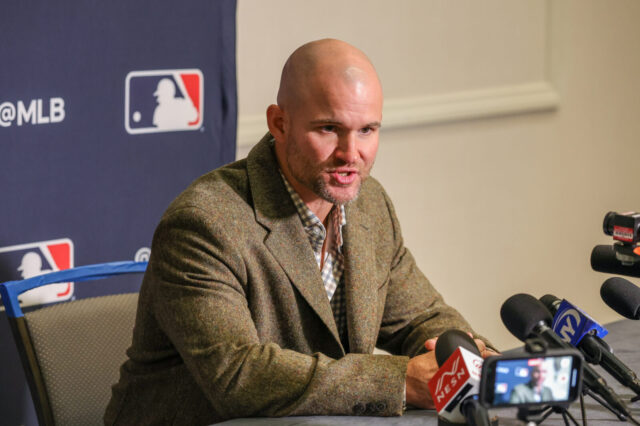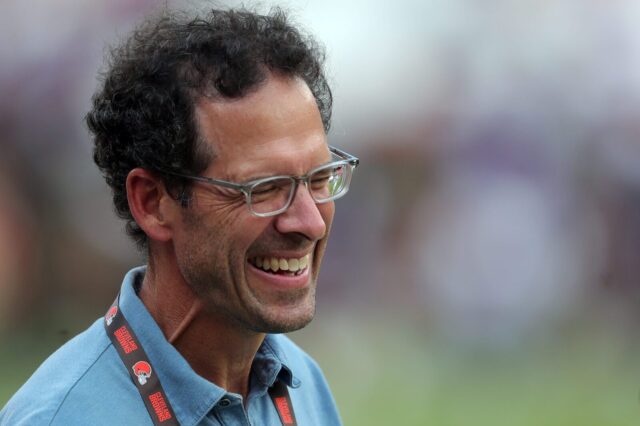The Colorado Rockies have been great on the left side of the infield for years. Trevor Story and Nolan Arenado, from 2016—when the former entered the league—through 2019, combined for 43.6 rWAR. No other third base and shortstop duo, including the Houston Astros’ dynamic left side composed of Alex Bregman and Carlos Correa, has matched their production during that time. In some ways, that repeated itself for the Rockies in 2020. In others, it looked like a whole different unit.
How can that be? Well, let’s start with Arenado. The 29-year-old superstar is going to win a eighth consecutive Gold Glove award after leading the majors in just about every advanced defensive metric—including Defensive Runs Saved, a category in which Arenado finished at 15 runs above average. That would have been terrific in a 162-game season, let alone in basically a third of a campaign. However, offensively, the five-time All-Star just wasn’t himself in 2020. Arenado finished the season, one that was shortened by a week because of a shoulder injury that occurred way back in July, with a .253/.303/.434 line. The .738 OPS was his lowest since his rookie season in 2013.
Arenado seemingly had a good approach, drawing 15 walks compared to just 20 strikeouts, but he hit a woeful .175/.261/.298 with runners in scoring position, a category in which he’s been tremendously successful over the course of his career until now. And just 33.7 percent of his batted balls were of the hard-hit variety. That rate of quality contact was, by far, the worst of his career.
Those numbers, disappointing as they look on the surface, are made even worse when considering Arenado’s very public spat with Rockies general manager Jeff Bridich last offseason regarding—as far as we can tell, anyway—the direction of the team. Speaking of which, Colorado’s first and second basemen finished near the bottom of the league in rWAR at -1.3. Only the Pittsburgh Pirates, Texas Rangers, and Miami Marlins were worse. Colorado found a potential diamond in the rough in Josh Fuentes, who led all major league first basemen in DRS despite appearing in only 26 games at the position. However, Fuentes left a lot to be desired offensively; though he finished the season with a .306 batting average, the rookie infielder walked just twice in 103 plate appearances and, when adjusting for park, ended with an OPS+ of just 90, meaning his offensive production was 10 percent below league average.
Aside from Fuentes, the Rockies were a mess at first base, and didn’t get a whole lot of production at second base either. Ryan McMahon, who saw the majority of the playing time there, never really got going offensively, hitting just .215/.295/.419. McMahon finished second on the team in homers and had a good batted ball profile, including a team-leading hard-hit rate, but his 34.2 percent strikeout rate was the second-highest among qualified National League hitters. So, despite above-average defense at multiple positions, McMahon barely broke into positive territory in terms of rWAR.
Here’s a little bit more detail on what we saw from Rockies infielders in 2020.
Most Valuable: Trevor Story (2.1 rWAR, 2.5 fWAR)
Story has now put together three consecutive remarkably consistent seasons offensively, finishing 2020 with a .289/.355/.519 line. The fifth-year shortstop led the team in homers with 11 and posted career-best walk and strikeout rates, pointing to some improvement in his approach. After some early season issues on defense, Story rebounded to finish 2020 as one of baseball’s best fielders at shortstop, compiling 5 DRS. And, for good measure, Story led the National League in stolen bases. With his improvement in terms of hitting for contact, he’s cementing himself as one of baseball’s few true five-tool players.
Least Valuable: Daniel Murphy (-1.3 rWAR, -0.9 fWAR)
Murphy’s tenure as a Rockie can best be described as disastrous. It’s not just that he hit .236/.275/.333 in 132 plate appearances this year; it’s that he did it while DJ LeMahieu, who received the exact same two-year, $24 million deal from the New York Yankees that Murphy got from Colorado, won a batting title and was one of the best players in the American League. And, that was basically a repeat of 2019, when Murphy was a little better offensively but was barely replacement level overall.
To be fair, more than one baseball analyst thought for sure that Murphy would be able to wear out the gaps at Coors Field and possible win a batting title of his own. But we get the benefit of working in hindsight here, and that gift tells us that Murphy was just the latest in a slew of horrible free-agent contracts doled out by the Rockies’ brass.
Most Surprising: Josh Fuentes (1.0 rWAR, 0.4 fWAR)
Fuentes’ defense was absolutely superb, and though his offense might have been a bit of a mirage as outlined above, it can’t be ignored that he did his best work against the Los Angeles Dodgers. In eight games against the perennial division leaders, Fuentes went 8-for-19 with a pair of homers and 10 RBI. It’s worth noting that he had 7 RBI against every other team combined. If nothing else, Fuentes brought energy and confidence to the team; it’s just a shame that it was too little, too late.
Most Disappointing: Brendan Rodgers (-0.5 rWAR, -0.3 fWAR)
The Rockies’ prospect, for the second consecutive season, didn’t get much of an opportunity to contribute before injuries ultimately did him in. But, also for the second consecutive season, Rodgers added little to nothing in the limited time he did see. He finished 2020 just 2-for-21 at the plate and is now hitting .196/.235/.227 in 102 trips to the plate overall. Rodgers hasn’t shown the ability to hit the ball hard with any sort of consistency during his brief stay in the majors, and it’s a bit worrisome that he’s compounded that issue by not being able to stay healthy.
What Happens Next?
This is a loaded question. Both Arenado, if he opts out of his eight-year deal, and Story could be free agents after 2021. Given the Rockies’ issues offensively, in the bullpen, and at the back of the starting rotation, assembling the talent needed to give things an honest run next season is going to be difficult. That becomes even more clear when looking at the Rockies’ farm system, which—by all accounts—ranks among the bottom five in baseball. There’s little help on the way, and the high-end prospects that it usually takes to trade for the sort of talent the Rockies need to turn the ship around simply aren’t there.
As it relates to the Rockies’ infield, a power-hitting first baseman should be considered. Unfortunately, there aren’t a lot of options on the free-agent market. However, with the likely permanent adaptation of the designated hitter, the Rockies will have more flexibility than in previous years. In fact, given his defensive prowess and the Rockies’ apparent insistence to pitch to contact (more on that later in the series), sticking with Fuentes at first base isn’t the worst option. If he completely falters offensively, it wouldn’t be a bad idea to shift McMahon over to first base; as stated above, his batted ball profile points to some potential improvement in overall offensive production, and keeping him in the lineup consistently might be the way to get there. The Rockies will need Rodgers to live up to his top prospect billing if that’s the case, otherwise they’ll have to count on Garrett Hampson to provide some offense.
None of this is ideal, and that’s part of the reason why the Rockies need to take a deep, honest look at their future and act accordingly prior to the start of next season. Sadly, that could mean they’ll no longer have baseball’s best left side of the infield, and it could be a while before we see something like that again at 20th and Blake.



